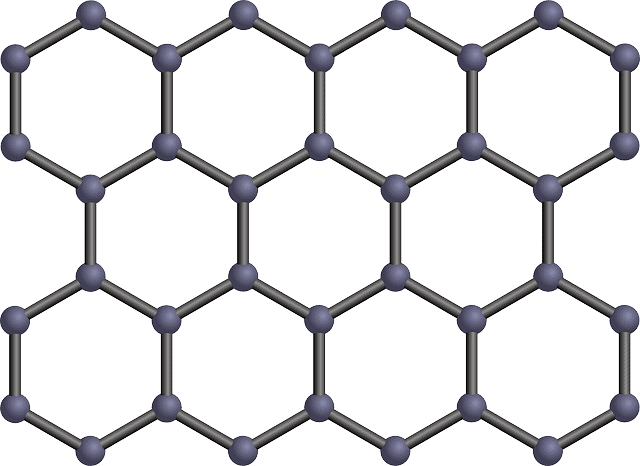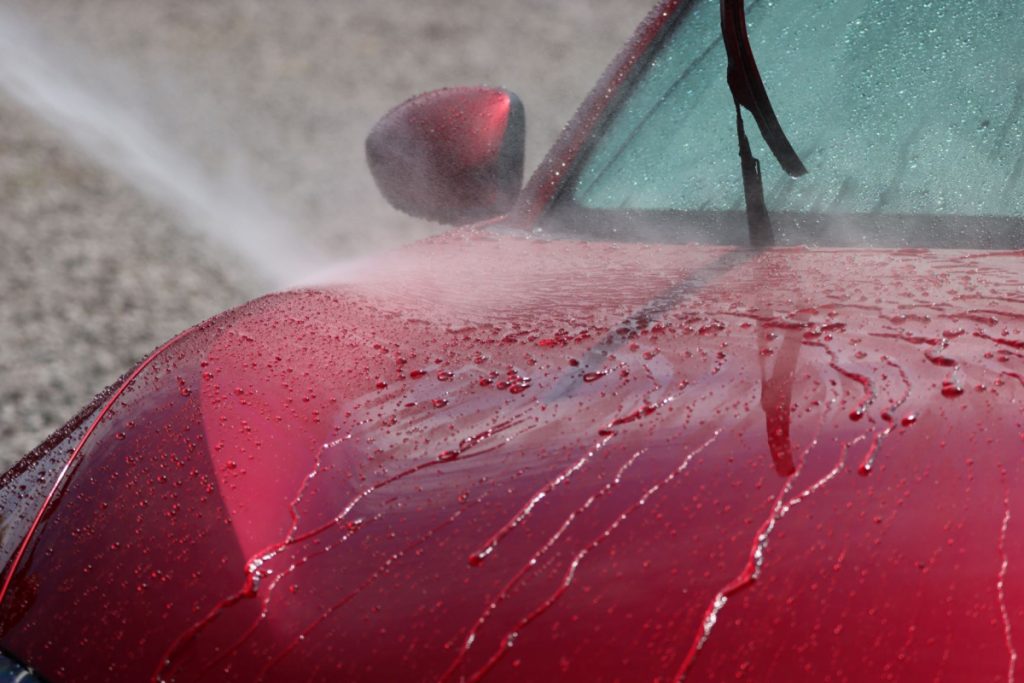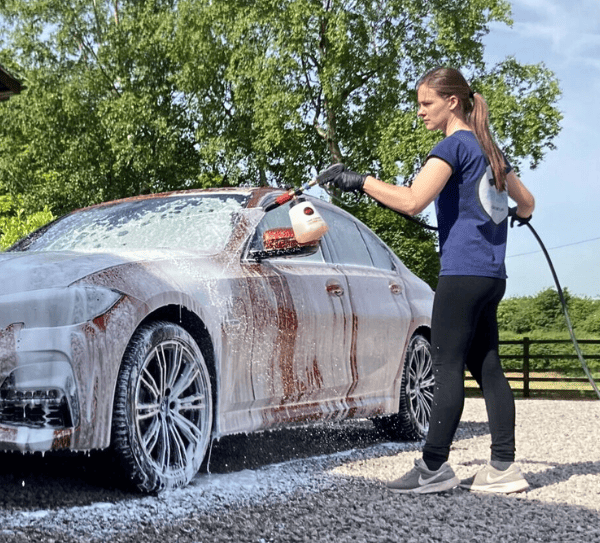Ceramic coatings and graphene coatings are two of the best options to go for, if you’re looking for the most durable protection for your car’s paintwork. But which is the better option?
In this article, I’ll be putting graphene and ceramic coatings head-to-head and compare all the differences including durability, gloss, hydrophobicity, price, cost, ease of application and plenty more. So let’s get started!
Ceramic vs Graphene Coatings
Graphene coatings claim to offer better durability and are less prone to water spots than ceramic coatings. Ceramic coatings are usually cheaper and more readily-available. Both ceramic and graphene coatings are similar in terms of gloss, hydrophobicity and application method.
Here is a quick table comparing the properties of ceramic and graphene coatings.
| Property | Graphene Coatings | Ceramic Coatings |
| Average Durability | 5+ years | 2-5+ years |
| Hydrophobicity | High | High |
| Application Difficulty | High | High |
| Gloss | Cold-looking shine | Cold-looking shine |
| Slickness | High | High |
| Cost | $100-150 | $50-100 |
| Availability | Harder to find | Readily available |
Now we’ve been through a quick comparison, let’s take a look at each coating type in a bit more detail. Finally, we’ll move onto some direct in-depth comparisons.

Intro to Ceramic Coatings
Ceramic coatings consist of silicon dioxide, or silica which is often derived from quartz crystals. They are combined with many other chemicals to produce a liquid which when applied to a car and left to cure, forms a clear-hard coating.
Ceramic coatings over past decade have become huge in the detailing world. They were the go-to form of paint protection for those looking for something as durable as possible because they simply blew sealants and waxes out of the water when it came to longevity and protection.
Since the release of the first ceramic coating, many manufacturers now offer various grades of ceramic coating which can be applied by weekend warriors, or trained professionals.
Looking to learn more? Check out this complete guide to ceramic coatings for more information.
Intro to Graphene Coatings
Graphene coatings are the “next-generation” of paint protection following on from ceramic coatings. Graphene is a substance made from carbon atoms arranged in a honeycomb structure which is very thin, but incredibly tough, even harder than diamond.
So, instead, graphene coatings actually consist of graphene oxide to allow the graphene to be incorporated into solution.
Most graphene coatings are ceramic coatings that are infused with graphene to improve performance. So in a lot of cases, graphene and ceramic coatings are not completely separate types of coating.
Since incorporating graphene a relatively new form of paint protection, much fewer brands offer them, however they are becoming increasingly popular. Like ceramic coatings, the main benefits when compared to waxes and sealants, are the durability, increased protection and hydrophobicity.

Graphene vs Ceramic
Now we’ve had a brief intro to ceramic and graphene coatings, let’s compare them against each other in the following categories:
- Durability
- Hydrophobicity
- Application
- Gloss and finish
- Slickness
- Tendency to cause water spots
- Cost
- Availability
Durability
Both ceramic and graphene coatings are incredibly durable, most offering at least 2 years of durability. This is one of the reasons why a lot of car owners prefer them to waxes and sealants which offer months of protection rather than years.
There are varying grades of ceramic and graphene coatings which all last different amounts of time. However, generally graphene coatings claim better durabilty.
Most ceramic coatings claim to last between 2-5 years. Whereas most graphene coatings claim at least 5 years durability, some even claim the offer 7 years protection.
It’s important to recognise here though that you can get ceramic coatings that will last as long as graphene coatings, it really depends on the exact coating you’re considering.
Check out my coating durability guide to learn more about this topic.
WINNER: GRAPHENE
Hydrophobicity
Again, both coating types are very hydrophobic and will sheet water off the surface incredibly quickly. One of the claims of graphene coatings is that they offer a higher “water contact angle”. This simply means that water is less likely to stay on the surface because the beads tend to roll off as they sit a lot taller.
Most people will struggle to tell the difference between the hydrophobicity of good quality graphene and ceramic coatings though.
The level of water-repellency will typically depend on the quality of coating, and less on whether its either graphene or ceramic. You’ll be able to find ceramic coatings which are more hydrophobic than lower quality graphene coatings and vice-versa.
WINNER: DRAW

Ease of Application
So this is where coatings tend to fall short in comparison to waxes and sealants. To get the best results, you need to put in a lot of prep and really know what you’re doing when you apply these products.
That’s why coatings are typically applied by professionals because you’ll need a temperature-controlled, undercover space to apply them in most cases. So which is the best option out of the two?
To be honest, there isn’t really much difference.
You’ll need a completely bare paint surface to apply either coating type. That means you’ll need to thoroughly wash, decontaminate, polish and panel wipe before even thinking about the application. Then you’ll need to apply the coating to an applicator, work in small sections, level and then buff when the coating has “flashed”.
If you’ve not got a garage and have to work in very hot/ cold or humid conditions, then you will find it easier to apply wax or sealant instead, or a hybrid product. There are some coatings though that can be applied outside because they have shorter cure times.
There are plenty of “graphene sprays” and “ceramic waxes” on the market which are less durable but offer the technology in a more user-friendly format.
WINNER: DRAW
Check out my guide to preparing the car and applying a coating to learn all the steps in the process and the products needed.
Gloss and Finish
Ceramic and graphene coatings typically offer a cold-looking shine to the paintwork, similar to sealants. They don’t offer that warm kind of glow you get with a Carnauba wax.
There is little to no difference between the type of finish you get with ceramic and graphene coatings. Both offer that cold, wet-look that looks fantastic especially if the paintwork has been properly prepped and the paint corrected before application.
WINNER: DRAW

Slickness
Slickness is very important to help keep the car clean. The slicker the paint surface, the easier dirt and muddy water will slide off, rather than stick on making the car look like it needs another wash.
There’s a bit of a debate here as to which is slicker, graphene or ceramic. The truth is, it really depends on the coating you’re using. Some manufacturer’s will have a super slick graphene coating, and the ceramic coating may be a bit “grabbier” and vice-versa.
WINNER: DRAW
Water Spotting
This is one of the main areas where graphene claims to come out on top, compared to ceramic coatings.
Ceramic coatings often suffer from water spotting, if the vehicle has been left sitting out following some rainfall. These water spots not only look ugly, but can also corrode the coating and impact the durability and performance over time.
Graphene coatings claim to lower the surface temperature. This means the water will not evaporate as quickly, so the water beads will roll off when you next drive the car instead of leaving ugly water spots.
Of course, the water won’t stay there for ever, but the idea is that it gives you more time to deal with the water beads before they dry and turn into water spots.
WINNER: GRAPHENE
Cost
Now let’s talk about the price. Graphene coatings are relatively new to the market compared to ceramic coatings, so fewer brands have formulated one yet. This means that there’s simply less variation in price.
Different ceramic coatings tend to offer different levels of quality and durability. This means you can usually find them on a budget, if you’re willing for the durability to be closer to a year, rather than several years.
Here’s a few comparisons.
- Ceramic coatings that last from 1-2 years are typically around $50-100
- Ceramic coatings that last from 2-5 years are typically around $100-150
- Graphene coatings that last upwards of 5 years are typically around $100-150
Graphene coatings tend to be more expensive as they typically last longer than ceramic coatings. Most graphene coatings are a similar price ($100-150) to premium ceramic coatings. Whereas, you can purchase lower-grade ceramic coatings for roughly $50-100.
Check out my guide to how much coatings cost when applied professionally or at home to learn more.
WINNER: CERAMIC (lower cost-to-entry)
Availability
Absolutely tonnes of ceramic coatings exist on the market, by many different brands. A lot of brands also make several ceramic coatings which offer different levels of performance and durability for different budgets.
Graphene coatings are harder to find because they’re a newer technology. Although there are quite a few brands now venturing into the world of graphene, you’ll typically find it a bit easier to find a ceramic coating than a graphene one, at least for the moment.
WINNER: CERAMIC
Which Should You Choose?
So which is the best option for you then? Ceramic or graphene. I want to try and steer away from the “it’s up to you” answer, so I thought it’d be a good idea to round off this article with some more tangible conclusions to help you decide.
- Ceramic coatings are more readily-available and have a lower cost-to-entry.
- Graphene coatings generally last longer, and less likely to cause water spots.
- Ceramic and graphene coatings offer similar levels of gloss, slickness, and ease of application/ preparation required.
- There’s plenty of variation within each coating type between brands, so do your research on whichever coating you choose to find the best option.
Comparing ceramic and graphene coatings as a whole isn’t the best way to decide what to apply to your car. It really depends on the specific coatings in question.
Since graphene coatings are relatively new on the market, there isn’t much evidence to suggest they are better overall compared to ceramic coatings at the moment.
Check out my complete guide to the pros and cons of ceramic coatings so you know exactly what to expect.
Thanks for reading! I hope you’ve found this article useful. Don’t forget to take a look around the website to find out plenty more about car detailing.

